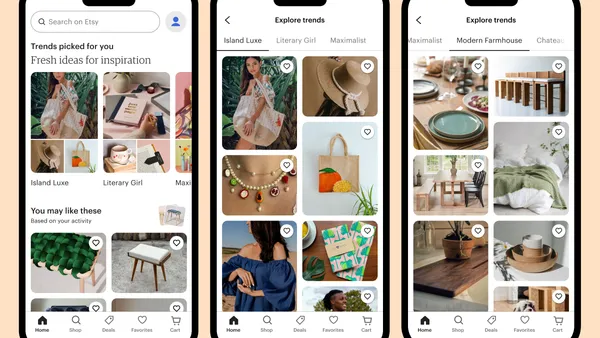Dive Brief:
-
More than 20% of Walgreens’ mobile app users are age 55 and older, according to new data from the retailer. That figure is more than twice the 9% of all smartphone shopping app users who are 55 and over, according to the 2017 Consumer Technographics North American Online Benchmark Survey from Forrester Research.
-
Walgreens credits its mobile pharmacy features, such as Pill Reminder and Refill by Scan, for much of its app popularity among older Americans. About 37% of those using its mobile pharmacy tools are people 55 and older, according to Walgreens.
-
The retailer has continued to add new features with older app users in mind, such as simplified menu navigation, support for smartphones that allow font-size display adjustments within apps and support for TouchID and secure auto-login for users who have trouble remembering their log-in and payment credentials.
Dive Insight:
Walgreens has wisely applied an understanding of who its core customers are to both encourage and help that group use the mobile app more frequently and to greater effect. In addition to the app enhancements and features mentioned above, Walgreens has tried to recreate the strong connection that many customers have with their local Walgreens pharmacist, according to Mindy Heintskill, Walgreens divisional vice president, loyalty.
“We wanted to replicate that connection digitally, so customers can get a high-value, personalized experience even when they can’t make it into a store,” she said in a statement. “We created Pharmacy Chat, which enables customers to have access to trusted experts through our site or mobile app anytime of the day or night, wherever they are.”
More generally, Walgreens also has done a lot in the last year or so to improve its app feature set and capabilities, such as integrating the Balance Rewards loyalty program with Android Pay, a move that could make it much easier for someone picking up a prescription or something else at Walgreens to apply a loyalty discount at checkout.
Walgreens' success in engaging older consumer has a lot to do with knowing their customers, and creating mobile commerce tools and experiences that suit that particular audience.
The Forrester study mentioned by Walgreens suggests that on a broader basis only 10% of smartphone owners who use health and wellness apps at least weekly are in the 55-or-older category. This indicates there is a lot of room for growth in usage among older demographics, and a lot of potential for app operators to draw the 55-plus crowd in, provided they know what that group really wants.












